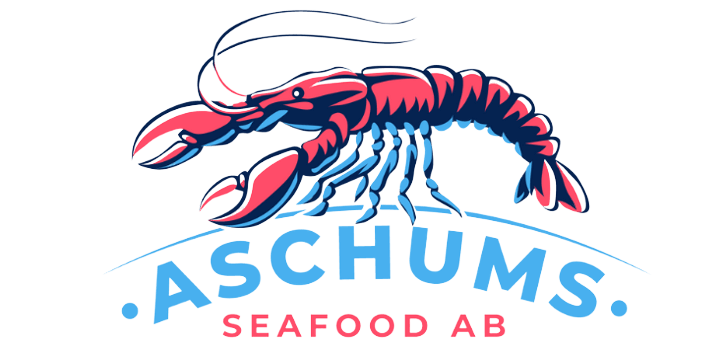Why sustainable seafood matters at Aschums Seafood AB
At Aschums Seafood AB, we believe sustainable seafood is not just a buzzword. It is the backbone of our mission and reputation. We source fish with care, protect marine ecosystems, support fishers, and promote ocean health. Our customers demand traceability, ethical practices, and long‑term stability. Thus, sustainable seafood is a core value we commit to every day.
Ocean stocks suffer from overfishing, habitat destruction, and pollution. If we ignore that, future generations lose access to seafood. That is unacceptable. Therefore, Aschums Seafood AB invests in sustainable supply chains, certifications, and best practices to ensure our fish remain abundant.
Through transparency, we show consumers that our products adhere to rigorous ecological standards. We also educate chefs and home cooks about how to prepare sustainable fish. In this article, we explain what makes something the most sustainable seafood, which certifications we hold, and how you can cook them at home with delight.
What defines the “most sustainable seafood”?
“Sustainable seafood” generally means fish or shellfish from sources that can maintain or improve populations over time, while minimizing environmental harm. To call something the most sustainable seafood, we look at:
Stock health: the fish population is abundant or recovering
Fishing method: low bycatch, minimal habitat damage
Traceability: full chain of custody, legality, no illegal fisheries
Ecosystem impact: minimal damage to seabed, low carbon footprint
Certifications by third parties
In our product line, we highlight species such as Atlantic mackerel, Arctic cod (skrei), Alaskan pollock, and certain shellfish like mussels and oysters. These often rank among the most sustainable seafood due to robust stocks and gentle harvest methods (e.g. hand harvesting, selective gears).
We avoid or limit species under high stress such as bluefin tuna or wild Chilean sea bass, unless they are obtained under strict quotas or restoration programs.
At Aschums Seafood AB, we maintain several key certifications and standards that prove our commitment to sustainable seafood:
MSC (Marine Stewardship Council)
The MSC label verifies that a wild fishery meets sustainability criteria: healthy stock, minimal impact, and effective management. Each step from catching to processing must follow the MSC Chain of Custody.
España
+1
Only fisheries rigorously audited by independent third parties can carry the blue MSC tick. That ensures the fish is traced back to a certified sustainable
ASC (Aquaculture Stewardship Council)
For farmed species, the ASC certification ensures responsible aquaculture. It addresses water quality, feed sustainability, disease control, habitat, and social conditions. The ASC label gives assurance that farmed seafood is ethical and sustainable.
We work with the Global Sustainable Seafood Initiative (GSSI) to benchmark certification programs
We permit unannounced audits and regular testing to verify legal harvests.We maintain full chain of custody and full traceability in our supply chains
Below are some species we emphasize as most sustainable seafood options, and why:
Atlantic mackerel (Scomber scombrus)
Highly abundant, well-managed populations
Caught using purse seine or hook & line with minimal bycatch
Rich in omega‑3s, flavorful and versatile
Arctic cod / SkreiCold‑water cod with seasonal migrations
Managed quotas, relatively low environmental impact
Mild white flesh, ideal for many preparations
Alaskan pollock (Theragra chalcogramma)
Large, healthy stock in North Pacific
Mild taste, ideal for fish sticks, fillets, soups
Mussels and oysters (shellfish)
Filter feeders: they improve water quality
Low feed input, very low carbon footprint
Farmed in coastal waters with minimal habitat disruption.Each of these is commonly ranked among most sustainable seafood choices by sustainability experts and ecolabel lists.How to cook sustainable seafood (easy and delicious)
Choosing sustainable fish is just part of the equation. You want to enjoy it too. Below are cooking tips and recipes for the fish types above.
>Atlantic mackerel: simple grill or pan sear
Clean and fillet the mackerel; you can leave the skin on Marinate lightly in olive oil, lemon juice, garlic, herbs
Grill or pan sear for 3–4 minutes per side (fish is thin)Serve with a fresh salad or steamed vegetables
Its strong flavor pairs well with citrus, chili, and herbs.
>Arctic cod (Skrei): baked or gently poached
Preheat oven to 180 °C
Place cod fillets in a baking dish, drizzle with butter and lemon
Alternatively, gently poach in a light broth with herbs
Alaskan pollock: versatile use
Fillets: pan fry with breadcrumbs and herbs
In soups or chowders: flake the fish and add near end
Fish tacos: grill small strips, serve with slaw and salsa
Stews: use pollock chunks in tomato or coconut curry
Its mild flavor takes on spices well.
Mussels and oysters: steamed, grilled or raw
Mussels: scrub shells, discard broken ones
Drain and serve with broth
Oysters: serve raw on half shell with lemon or mignonette
Or grill lightly for 1–2 min
Do not overcook, else you lose texture
Shellfish cook fast; once they open (mussels) you’re done.
Ready to enjoy seafood you can trust? Browse our selection of certified sustainable seafood products today. Contact us or place an order now—and join us in safeguarding marine ecosystems for future generations.
